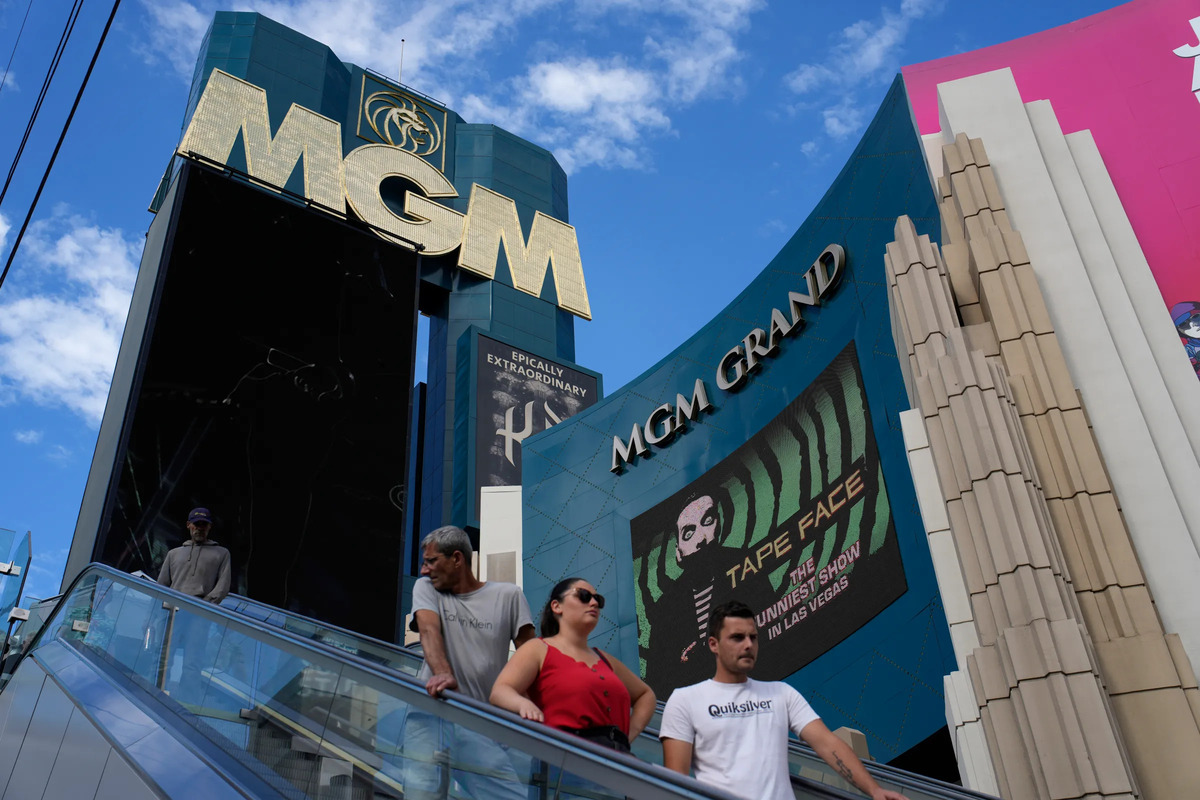
What makes MGM an iconic name in the film industry? Founded on April 17, 1924, Metro-Goldwyn-Mayer (MGM) has a storied history that spans nearly a century. This legendary studio was born from the merger of Metro Pictures, Goldwyn Pictures, and Louis B. Mayer Pictures. Known for its roaring lion logo and the motto "Ars gratia artis" (Art for art's sake), MGM quickly became Hollywood's most prestigious filmmaking company. From producing timeless musicals like "Singin' in the Rain" to iconic films such as "The Wizard of Oz," MGM has left an indelible mark on cinema. Despite facing financial challenges, including a bankruptcy in 2010, MGM's legacy endures, now as a subsidiary of Amazon MGM Studios. Dive into these 50 fascinating facts to understand why MGM remains a cornerstone of the entertainment world.
Key Takeaways:
- MGM, a legendary film studio, rose to fame during Hollywood's Golden Age, producing iconic musicals and winning numerous Academy Awards. Despite financial struggles, it continues to influence popular culture and entertainment today.
- From its founding by combining three studios to its acquisition by Amazon MGM Studios, MGM's enduring legacy is marked by iconic films, legendary stars, and innovative storytelling that have left an indelible mark on the film industry.
The Birth of an Iconic Studio
MGM's journey began almost a century ago, transforming from a small studio into a global entertainment giant. Let's dive into the fascinating history of this iconic studio.
- Founding: Metro-Goldwyn-Mayer was formed by combining Metro Pictures, Goldwyn Pictures, and Louis B. Mayer Pictures into one company.
- Marcus Loew: The founder of MGM, Marcus Loew, was a rags-to-riches story. He started by working in a penny arcade and eventually partnered with Adolph Zukor to buy a nickelodeon.
- Studio Name: The name "Metro-Goldwyn-Mayer" was chosen because it included the names of the three studios being combined: Metro Pictures, Goldwyn Pictures, and Louis B. Mayer Pictures.
Early Success and the Golden Age
MGM quickly rose to prominence, becoming Hollywood's most prestigious filmmaking company by the 1930s.
- Early Success: By the 1930s, MGM had become Hollywood's most prestigious filmmaking company, producing popular musical films and winning many Academy Awards.
- Contract Players: MGM was famous for its contract players, with a slogan that read "more stars than there are in heaven." This strategy helped the studio attract top talent and maintain a consistent quality of films.
- Golden Age: The studio's most prosperous era was from 1926 to 1959, bracketed by two productions of "Ben Hur." During this period, MGM dominated the box office with films like "Gone with the Wind" and "The Shining Hour".
Musical Masterpieces
MGM's musicals are legendary, setting the standard for the genre in Hollywood.
- Musicals: MGM was renowned for its musicals, which were considered the high point of musicals in Hollywood. The studio produced classics like "Singin' in the Rain," "An American in Paris," and "Meet Me at St. Louis".
- Arthur Freed Unit: The Freed Unit, led by Arthur Freed, was responsible for some of MGM's most iconic musicals. This unit included directors Vincente Minnelli and Charles Walters, songwriter Roger Edens, designer and producer Lemuel Ayers, and choreographer Michael Kidd.
- Leo the Lion: The studio's logo features Leo the Lion, a roaring lion that has become synonymous with MGM. The lion was originally a real-life mascot for Goldwyn Pictures.
Financial Struggles and Resilience
Despite its success, MGM faced financial difficulties but managed to bounce back.
- Film Library: MGM has an extensive film library that includes some of the most iconic films in history, such as "The Wizard of Oz," "Doctor Zhivago," and "2001: A Space Odyssey".
- Bankruptcy: Despite its success, MGM has faced financial difficulties. The studio filed for bankruptcy in 2010 and was subsequently sold to a consortium of investors.
- Amazon Acquisition: In 2022, MGM was acquired by Amazon MGM Studios, marking a new chapter in the studio's history.
Expanding Horizons
MGM didn't just stick to films; it ventured into television and even the casino business.
- Television Production: MGM expanded into television production in the 1950s, producing shows like "The Andy Griffith Show" and "The Twilight Zone".
- Casinos: The studio also ventured into the casino business with the creation of MGM Resorts International. The company operated several casinos, including the famous MGM Grand in Las Vegas.
- MGM Grand Las Vegas: The MGM Grand, which opened in 1993, was the largest hotel in the world at the time. It featured a Wizard of Oz theme, including animatronic versions of Dorothy and her friends, and a yellow brick road leading to an amusement park.
Themed Entertainment and Innovations
MGM's influence extended into themed entertainment, creating unique experiences for visitors.
- Themed Areas: The casino floor at the MGM Grand was divided into four themed areas: the Emerald City Casino, the Hollywood Casino, the Monte Carlo Casino, and the Sports Casino. Each area offered a unique gaming experience.
- Slot Machines: The MGM Grand originally featured 50 Lion's Share slot machines, one of which gained a cult following among gamblers. Only one of the machines remained after several years, and it was eventually retired after a jackpot win in 2014.
- Theme Park: Despite its name, Disney-MGM Studios in Orlando had very little to do with MGM. The licensing agreement allowed Disney to use the MGM name and logo, but the two companies had a touchy relationship due to disputes over theme park development.
Legacy and Influence
MGM's impact on the film industry and popular culture is undeniable.
- Motto: MGM's motto is "Ars gratia artis," which is Latin for "Art for art's sake." This motto can be seen on the film scroll around Leo the Lion's head in the studio's logo.
- Record Label: MGM had a record label that was created in 1946 to distribute the soundtracks from its hit musicals. The label was considered one of the major labels of the time but ceased to be profitable by 1972.
- William Hanna and Joseph Barbera: The heads of the MGM animation department, William Hanna and Joseph Barbera, left the studio in 1957 to create their own animation company, which would later become Hanna-Barbera Productions.
Stars and Scandals
MGM was home to many of Hollywood's biggest stars, but it also had its share of scandals.
- Frank Sinatra: Frank Sinatra was one of the many stars who got their start at MGM. He appeared in several films produced by the studio, including "From Here to Eternity" and "Ocean's 11".
- Judy Garland: Judy Garland was another iconic star who was under contract with MGM. She appeared in films like "The Wizard of Oz" and "Meet Me in St. Louis," but her contract was eventually terminated in 1950 due to financial constraints.
- Clark Gable: Clark Gable was also a major star at MGM, appearing in films like "Gone with the Wind" and "The Shining Hour." He was released from his contract in 1954 due to cost-cutting measures.
- Dore Schary: Dore Schary was brought in to revamp MGM's production strategy in the early 1950s. He focused on producing more modestly budgeted films and musicals, which helped keep the studio afloat during a difficult period.
- Eddie Mannix: Eddie Mannix was a fixer who worked for MGM to keep its stars in line and prevent scandals from reaching the media. He was instrumental in maintaining the studio's glamorous image.
Musical Innovations and Challenges
Producing musicals was both a highlight and a challenge for MGM.
- Musical Innovations: MGM's musicals were highly innovative, featuring complex choreography and memorable songs. The Freed Unit produced some of the most iconic musicals of all time, including "Singin' in the Rain" and "An American in Paris".
- Academy Awards: MGM won numerous Academy Awards during its golden age, including several for its musicals. The studio's commitment to quality and innovation earned it widespread recognition within the film industry.
- Film Franchises: MGM was one of the first studios to create film franchises, with series like "Tarzan," "Andy Hardy," and "The Thin Man." These franchises became a staple of modern cinema.
- Sequels: While sequels were not new in the 1930s, MGM pioneered the concept of continuing plots and characters in film franchises. This strategy helped build a loyal fan base and increase box office revenue.
Television and the Changing Landscape
The rise of television posed a significant challenge to MGM and other studios.
- Television Impact: The rise of television in the late 1940s and early 1950s posed a significant challenge to the film industry. MGM and other studios struggled to attract audiences back to theaters, leading to a decline in profit margins.
- Nicholas Schenck: Nicholas Schenck, a New York executive, urged MGM to find a new Thalberg who could improve quality while reducing costs. This led to the appointment of Dore Schary, who focused on producing more modestly budgeted films and musicals.
- Dore Schary’s Strategy: Schary’s strategy included cutting loose expensive contract players, recycling existing movie sets, and reworking expensive costumes. These measures helped keep the studio running during a difficult period.
- Arthur Freed’s Unit: Despite Schary’s efforts, Arthur Freed’s musical unit remained a bright spot for MGM. Freed’s unit produced some of the most iconic musicals of all time, including "Singin' in the Rain" and "An American in Paris".
Box Office Success and Decline
MGM's musicals were box office hits, but the studio eventually faced a decline.
- Box Office Success: MGM’s musicals were incredibly successful at the box office. Films like "Singin' in the Rain" earned $US7.2 million worldwide, while "The Wizard of Oz" earned $US35.3 million.
- Musical Challenges: Producing musicals was one of the most challenging genres due to the sheer number of people required to make them. The studio needed an existing infrastructure of composers, dancers, singers, choreographers, lyricists, and musicians to pull off successful musicals consistently.
- MGM’s Decline: By the 1950s, audiences were drifting to television, making it increasingly difficult for MGM and other studios to attract them to theaters. The studio’s high overhead expenses and declining profit margins led to a period of decline.
New Ownership and Modern Era
MGM underwent several changes in ownership, leading to its current status as part of Amazon MGM Studios.
- Kirk Kerkorian’s Acquisition: In 1969, businessman Kirk Kerkorian bought 40% of MGM and dramatically changed the operation and direction of the studio. He reduced the studio’s output to about five films per year and diversified its products by creating MGM Resorts International.
- MGM Resorts International: Kerkorian’s diversification efforts led to the creation of MGM Resorts International, which operated several casinos including the famous MGM Grand in Las Vegas.
- United Artists Acquisition: In 1980, MGM acquired United Artists, expanding its reach in the film industry.
- Ted Turner’s Ownership: In 1986, Ted Turner bought MGM but sold it back to Kerkorian a few months later. Turner retained the rights to the MGM film library and sold the studio lot in Culver City to Lorimar.
- Kirk Kerkorian’s Reacquisition: Kerkorian reacquired MGM in the 1990s and expanded the studio by purchasing Orion Pictures and the Samuel Goldwyn Company, including both of their film libraries.
- Sony Pictures Ownership: In 2004, Kerkorian sold MGM to a consortium that included Sony Pictures, marking another significant change in the studio’s ownership.
- Modern Era: Today, MGM is part of Amazon MGM Studios, continuing its legacy in film and television production. The studio remains committed to producing high-quality content that entertains audiences around the world.
Enduring Legacy and Cultural Impact
MGM's influence on the film industry and popular culture continues to be felt today.
- Legacy: MGM’s legacy extends beyond its films. The studio has influenced the film industry with its innovative production strategies, including the creation of film franchises and musicals. Its impact on popular culture is undeniable, with many of its films becoming cultural touchstones.
- Iconic Films: Some of MGM’s most iconic films include "The Wizard of Oz," "Doctor Zhivago," "2001: A Space Odyssey," and "Poltergeist." These films have stood the test of time and continue to be celebrated by audiences today.
- Musical Classics: MGM’s musicals are considered some of the best in Hollywood history. Films like "Singin' in the Rain" and "An American in Paris" have won numerous awards and remain beloved classics.
- Star Power: MGM has been home to some of Hollywood’s biggest stars, including Frank Sinatra, Judy Garland, Clark Gable, and Katherine Hepburn. These stars helped make MGM’s films some of the most successful at the box office.
- Innovative Storytelling: MGM has always been at the forefront of innovative storytelling. From its early days producing silent films to its modern-day productions, the studio has consistently pushed the boundaries of what is possible in cinema.
- Enduring Legacy: Despite facing numerous challenges over the years, MGM has maintained an enduring legacy in the film industry. Its commitment to quality and innovation has ensured that it remains a major player in the entertainment industry today.
MGM's Enduring Legacy
MGM's journey from a small studio to a global entertainment giant is nothing short of remarkable. Founded in 1924, MGM quickly became Hollywood's most prestigious filmmaking company, producing iconic films and musicals that have stood the test of time. Despite facing financial difficulties and changes in ownership, the studio has maintained its commitment to quality and innovation. From the roaring Leo the Lion logo to classics like "The Wizard of Oz" and "Singin' in the Rain," MGM has left an indelible mark on popular culture. Now part of Amazon MGM Studios, the legacy continues, influencing the film industry with its innovative production strategies and star-studded history. MGM's story is a testament to the enduring power of cinema and its ability to captivate audiences across generations.
Frequently Asked Questions
Was this page helpful?
Our commitment to delivering trustworthy and engaging content is at the heart of what we do. Each fact on our site is contributed by real users like you, bringing a wealth of diverse insights and information. To ensure the highest standards of accuracy and reliability, our dedicated editors meticulously review each submission. This process guarantees that the facts we share are not only fascinating but also credible. Trust in our commitment to quality and authenticity as you explore and learn with us.


